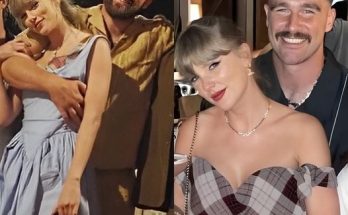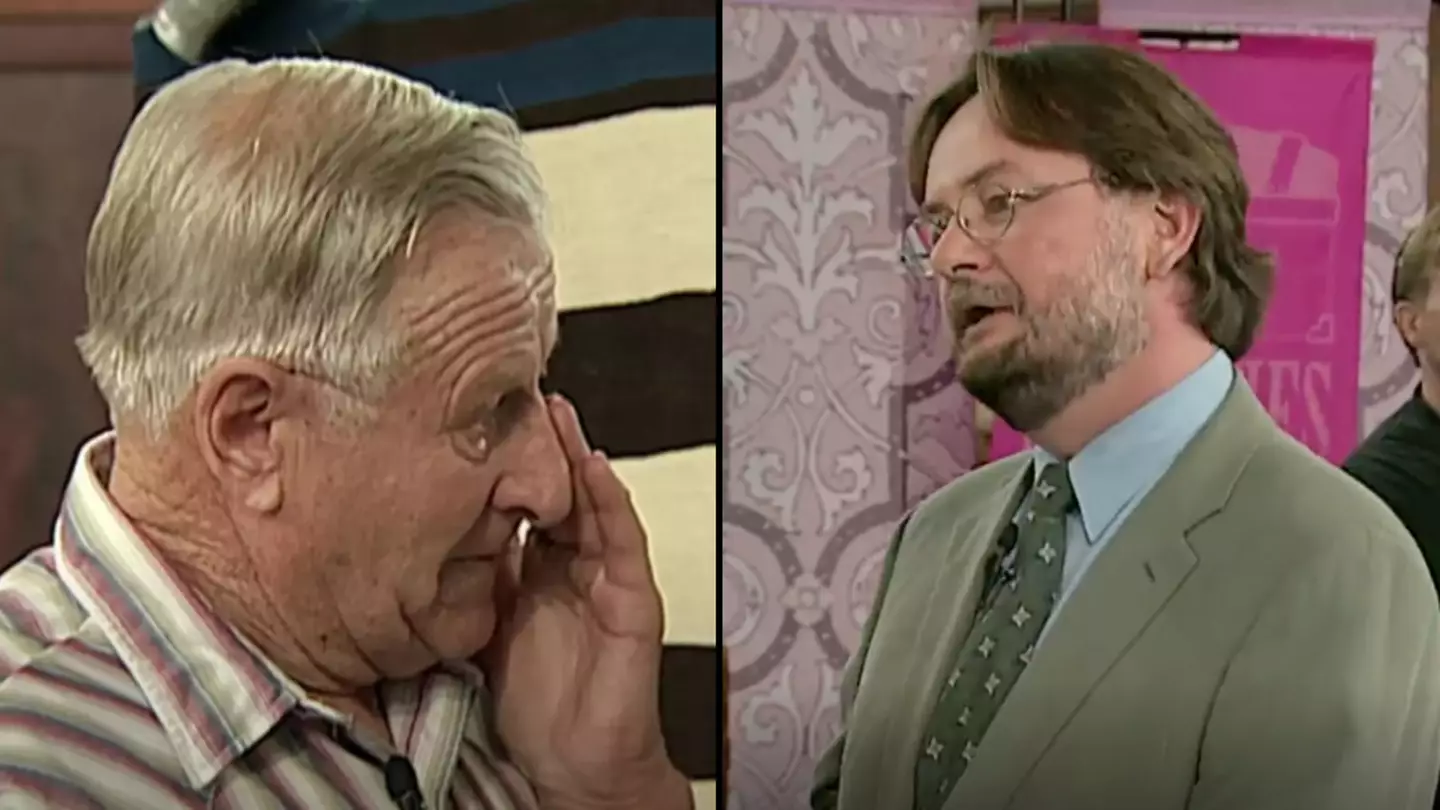
An Antiques Roadshow seller was left feeling emotional after the value of a ‘random item’ that he had on one of his chairs was revealed to him.
During an episode of the PBS TV show from 23 years ago, an elderly man named Ted made an appearance after looking to get a blanket, that was passed down for generations in his family, appraised.
According to the man, it was given to the foster father of his grandmother by well-known American frontiersman, fur trapper, wilderness guide and Indian agent Kit Carson, who was around in the 19th century.
He’s not the first to blindly get something valued after being told about its history, as people have had random items valued on the show at six-figures, changing their lives.
If Ted was to be believed, then the mid-19th century Ute First Phase Blanket boasted a lot of history and significance, as appraiser Donald Ellis explained how valuable the item was.
Originally found ‘on the back’ of one of the man’s chairs, Donald admitted that he ‘stopped breathing a little bit’ after seeing the Navajo blanket for the first time.
The appraiser further explained: “It’s not just a chief’s blanket, it’s the first type of chief’s blanket made. These were made in about 1840 to 1860, and it’s called a Ute, first phase.
“A Ute, first phase, wearing blanket. But it’s Navajo-made, they were made for Ute chiefs, and they were very, very valuable at the time. This is sort of, this is Navajo weaving in its purest form.”
Revealing it’s made from hand-woven wool, Donald commented on how smooth it is and compared it to silk.
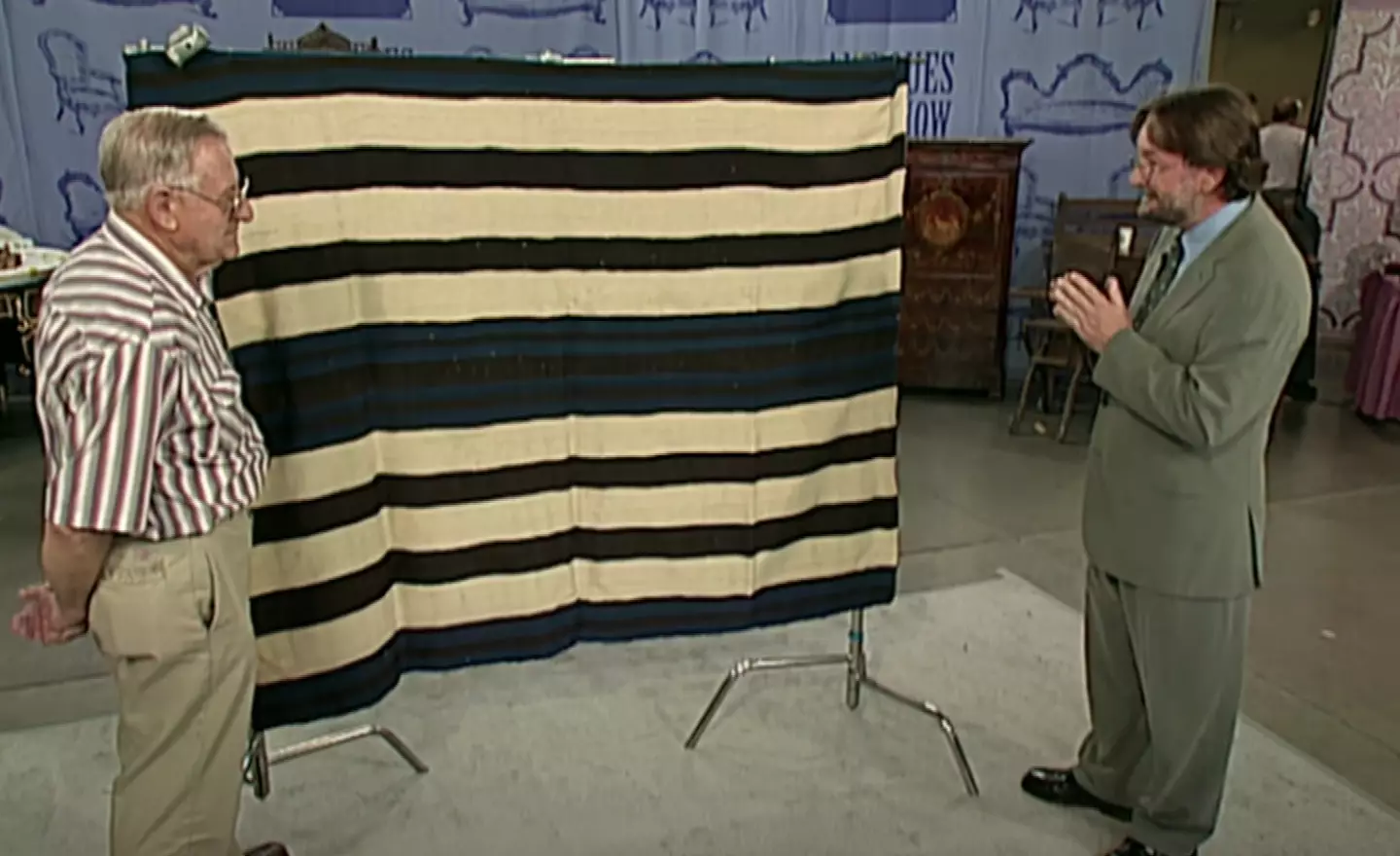
Ted had no idea about how much the blanket was actually worth (PBS)
Ellis then asked Ted if he is a rich man, to which he simply replied: “No.”
He then dropped the bomb on the guest, revealing: “Well, sir, um… I’m still a little nervous here, I have to tell you. On a really bad day, this textile would be worth $350,000 (£261,000). On a good day, it’s about a half a million dollars (£373,900).”
In utter disbelief, Ted’s jaw dropped, with Ellis calling the find a ‘national treasure’.
Ted said: “I had no idea. It was laying on the back of a chair.”
He started to shed some tears, as the appraiser admitted that he ‘just about died’ when Ted brought it in.
In today’s money, the find would be worth a cool $1,500,000 (£1,121,800) to $2,000,000 (£1,495,800) once adjusted for inflation.
Clearly emotional, Donald gave the guest some time to process the news he had just been told before going into more detail about the blanket, and how it could even be worth more.
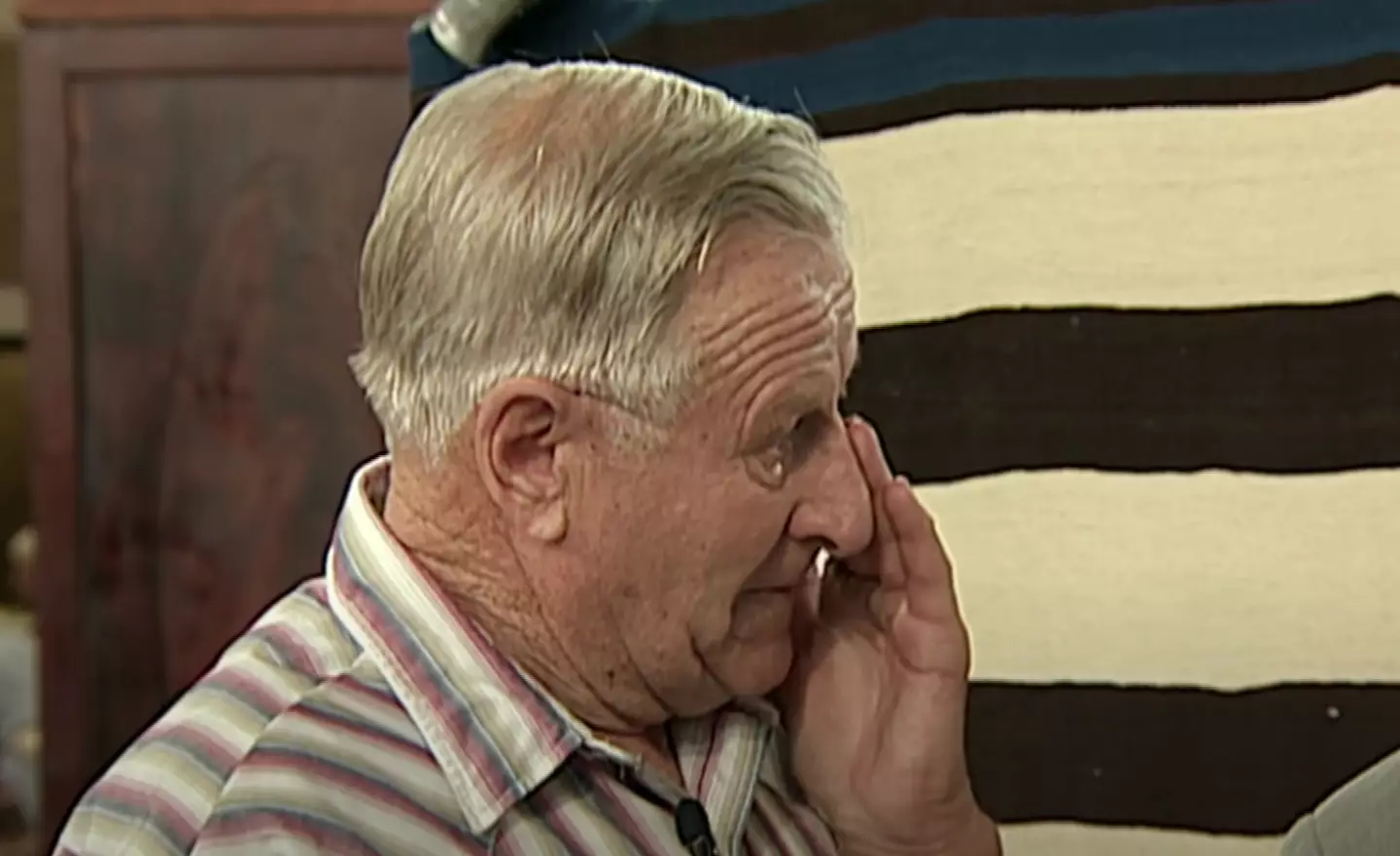
He couldn’t hold it together when he was told that the historic item could bag him $500k (PBS)
Donald further explained that the value was not considering the Kit Carson provenance, as this is sometimes difficult to work out.
“If we could do research on this and we could prove with a, without a reasonable doubt that Kit Carson did actually own this, um, the value would increase again – maybe 20 percent,” he revealed.
Ted emotionally responded: “Wow. I can’t believe it. My grandmother (and grandfather), you know, were poor farmers. She had, her foster father had started some gold mills and, you know, discovered gold and everything, but there was no wealth. No wealth in the family at all. Whoa… I can’t believe…”
It honestly might be worth asking your family members about some of the old things sitting around your house.
The strangest items that have appeared on Antiques Roadshow
Some items on the show have just been downright bizarre…
Human hair from famous poets
 Ever dreamed of owning the locks of William Wordsworth and Samuel Taylor Coleridge?
Ever dreamed of owning the locks of William Wordsworth and Samuel Taylor Coleridge?Well, it’ll cost you, as when this item was brought on Antiques Roadshow last year it was valued at upwards of £40,000.
The clippings were a family heirloom, and according to expert Justin Croft, one was taken on a person’s deathbed.
Yikes.
Nightmare fuel Teletubbies concept art
Turns out Tinky-Winky, Dipsy, Laa-Laa and Po originally looked pretty scary.
Jonathan Hills drew the concept art for the future children’s TV icons. He sadly died in 2020 and his wife brought some of his original sketches on the show in 2022.
Expert Mark Hill admitted some of the drawings were ‘creepy’, but went on to value the individual pieces between £500 and £2,000, and the entire collection of 80 drawings at up to £80,000.
A bottle of pee
Who could forget the time expert Andy McConnell inadvertently drank urine back in 2016?
A bloke called John found the bottle in his garden, and McConnell used the taste test to figure out what was inside, thinking it was port.
Fast forward to 2019, and Fiona Bruce revealed to McConnell: “Inside were these brass pins, all of these dating from the late 1840s, and the liquid – urine, a tiny bit of alcohol and one human hair.”
It turned out it was a ‘witches bottle’, buried on the threshold of a house as a protection against curses and bad luck.
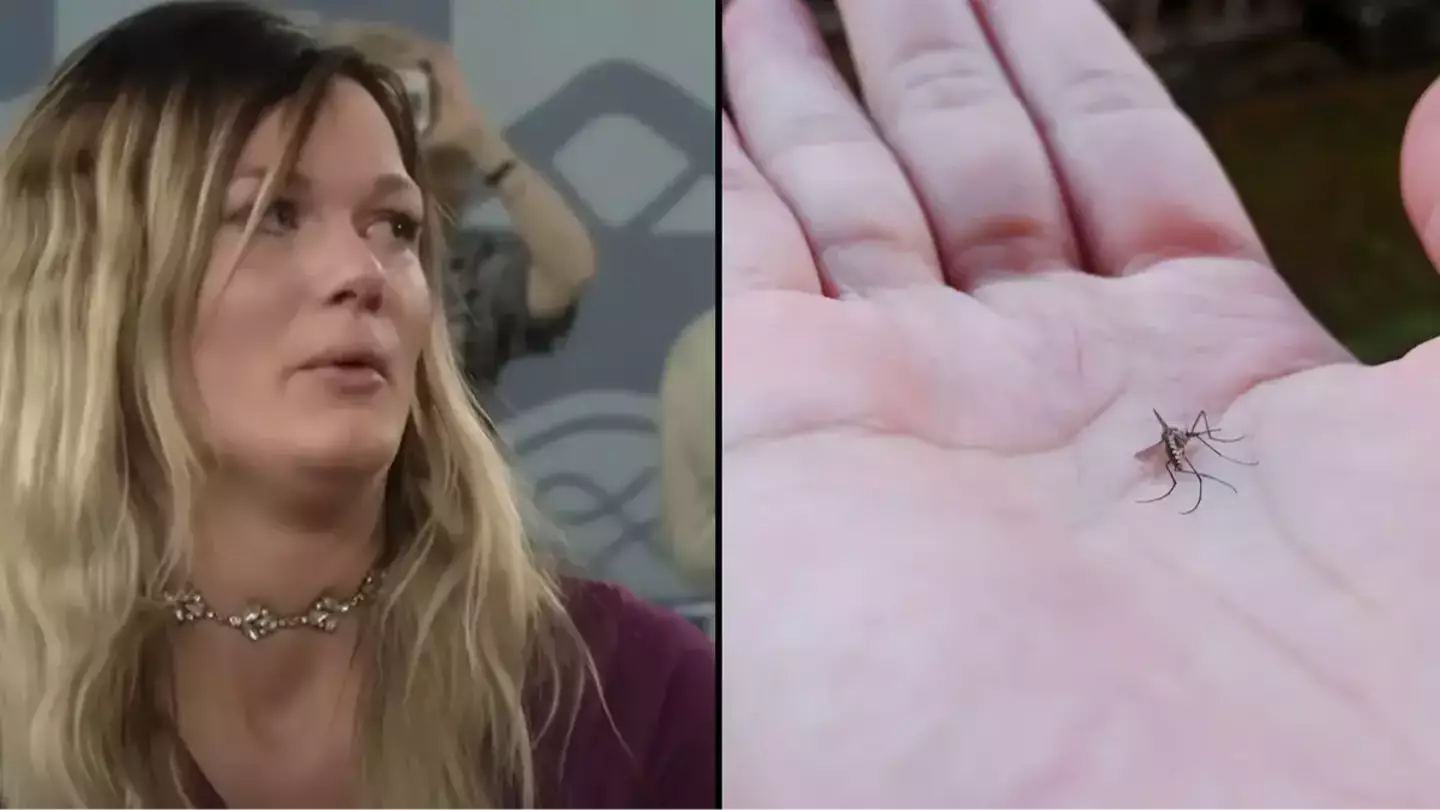
Antiques Roadshow viewers have been moved by one of the most ‘charming’ appraisals ever after a woman found a family heirloom she once had to remove an insect from was worth a serious amount of money.
It all unfolded during an episode of the American version of Antiques Roadshow on PBS, back in 2018.
The woman took a painting on to the TV show that has been passed down in her family for generations, with her great-grandfather originally gifting it to her grandmother over 70 years prior.
Looking for a valuation, she revealed the history behind the artwork, also saying that it had been appraised twice, once in 1998 as a print at $200 (£157), with the second time in 2004 at $250 (£196).
The woman also said that after being given the painting by her grandmother, she saw that there was a dead mosquito underneath the glass, so she removed it to take the dead insect away, but put the glass back on quickly after, as she recognised that the painting looked legitimate.
The woman took the painting to Meredith Hilferty, the Director of Fine Art Auctions at Rago, and a paintings and drawings appraiser for Antiques Roadshow.
Hilferty asked the woman if she knew anything about the artist, with the painting depicting Native Americans making their way on horseback through the American mountains.
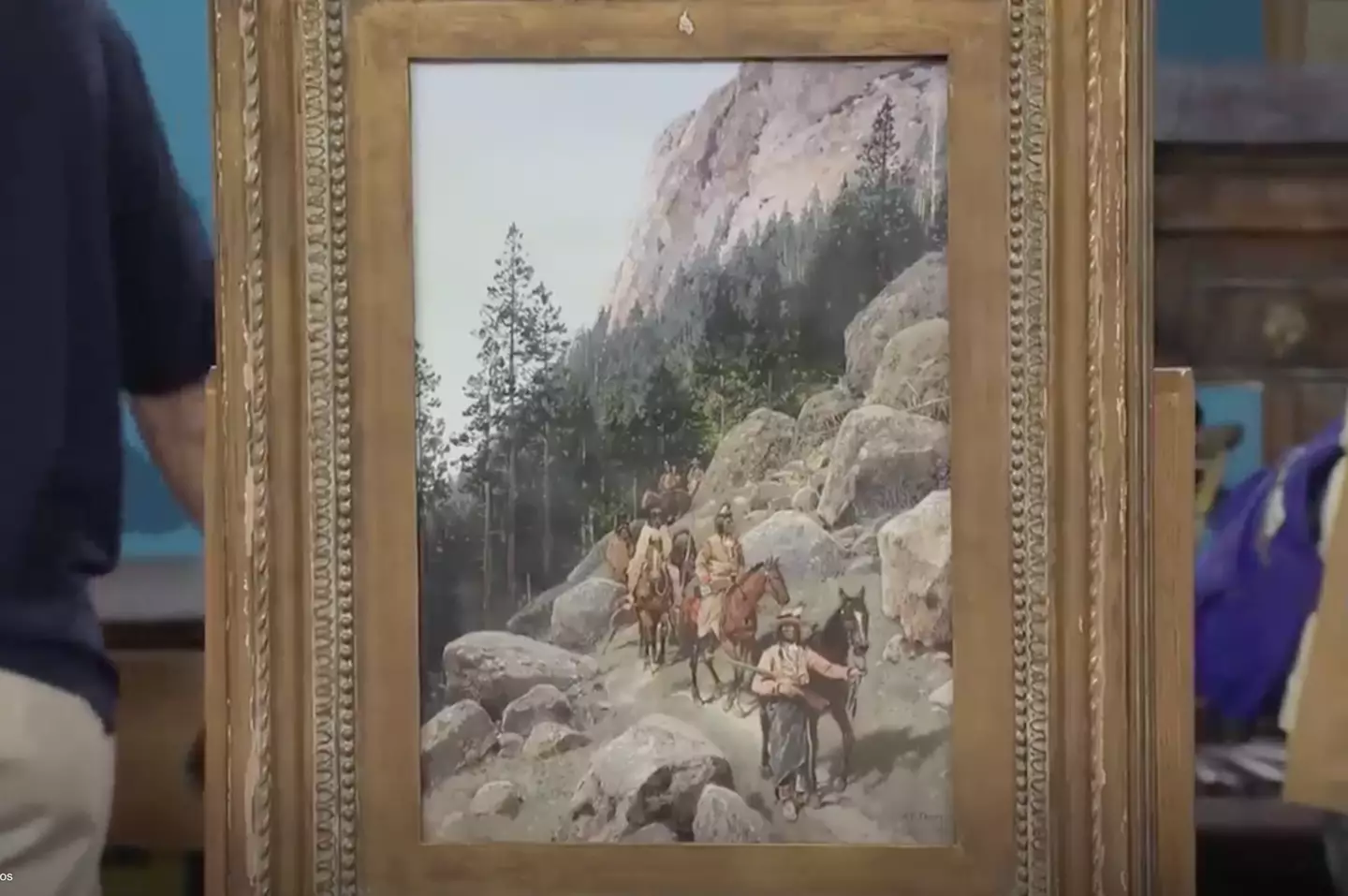
The appraiser told her that it was good she took the mosquito out (PBS)
She said that she knew that he was born in France and had associations with the Sioux tribe, with a mark on his signature signifying that he valued his association with them.
The professional clarified that his name was Henry Francois Farny, and that he moved to Pennsylvania from France at six years old, and he formed a relationship with the Seneca tribe, taking an interest in all Native Americans.
Focusing on the landscape instead of violence around the groups at the time, the piece was truly unique, with Hilferty revealing the value that the painting would sit around, in an auction today.
She stated: “If we were going to put this in an auction today, I would suggest an estimate of $200,000 (£149,500) to $300,000 (£224,350).”
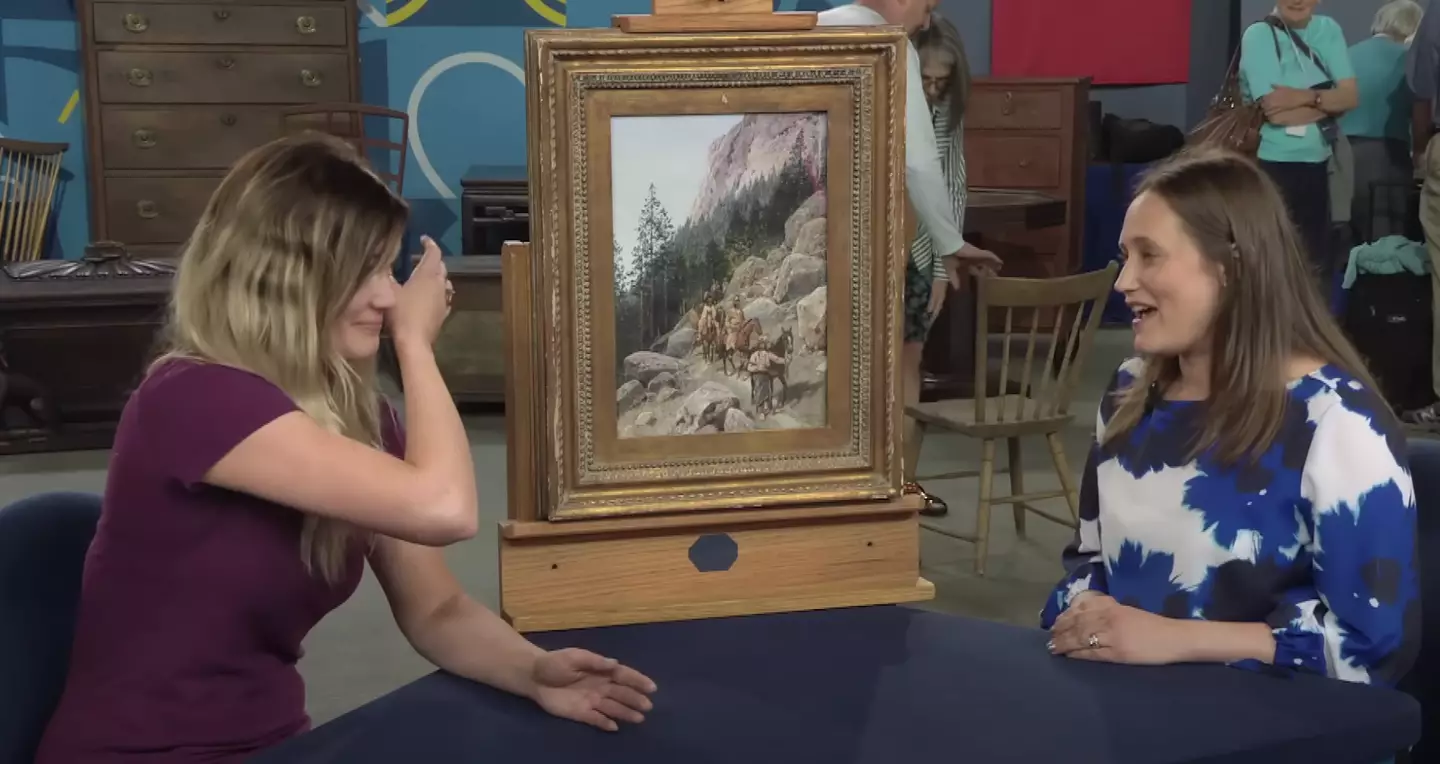
She couldn’t believe how much the painting was worth (PBS)
The seller burst into tears, speechless, before joking: “So I can’t hang it up.”
After saying that she didn’t know what to say and shedding a few tears, she asked Hilferty if she should have left the mosquito in the back.
Hilferty explained: “It’s actually not a bad idea that you took the bug out, ultimately we would like for our conservator to do that, but the bug could have continued to decay and caused a stain.”
Several viewers in the comments praised Hilferty for being straight forward with the seller, and letting her have her moment to process the price, with one labelling it as one of the most ‘charming’ appraisals in the show’s history.
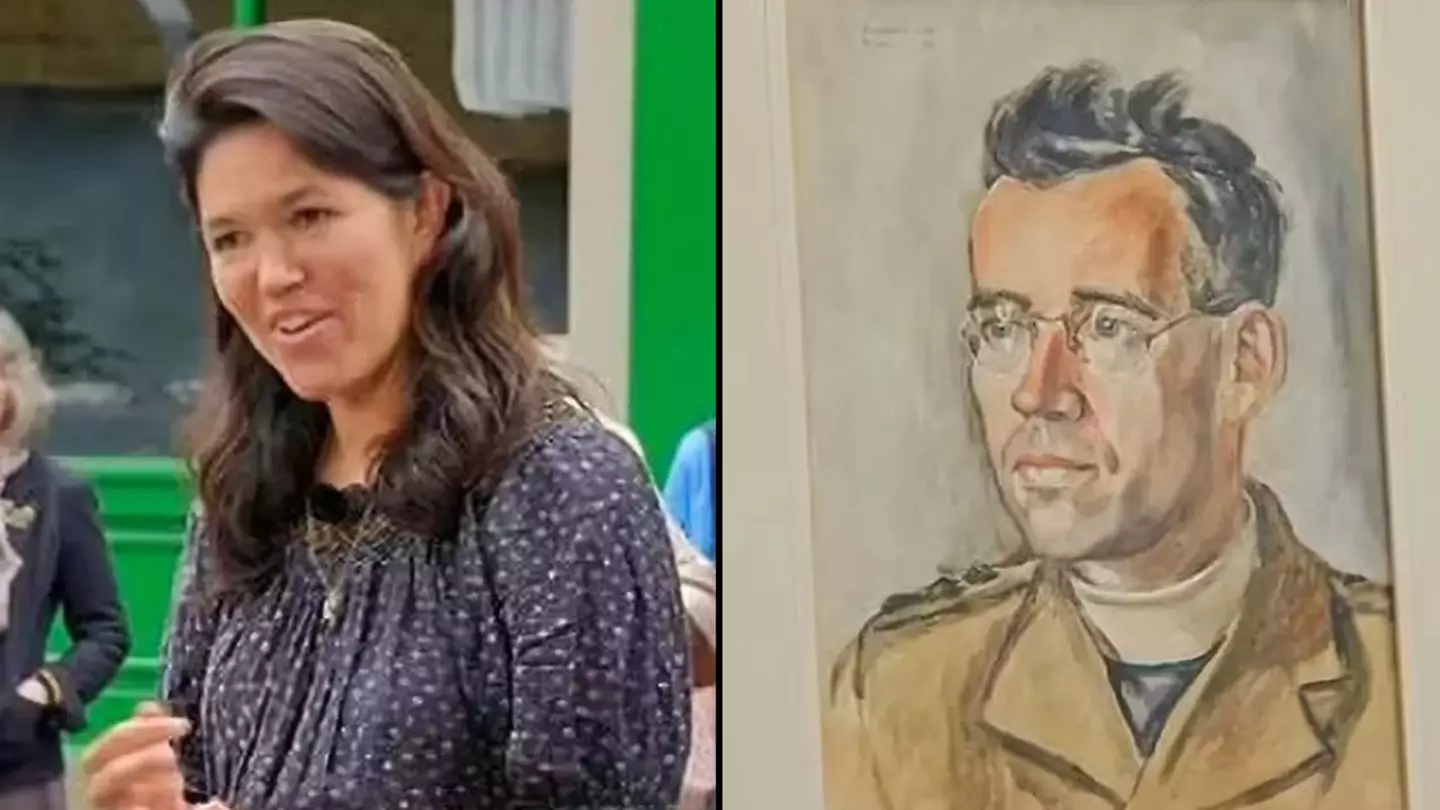
The latest episode of the BBC series aired on Sunday (28 April), and featured a surprising valuation of an item spotted when host Fiona Bruce took the show to Ulster Folk Museum.
While the TV series usually shows family members getting shocked at how much their generational items are worth, it looks like the experts have finally been stumped.
Christie asked the guest: “This is an incredibly striking portrait of a priest in watercolour and I love how the artist has captured the glint on his glasses,
“Can you tell us a bit more about the sitter?”
The guest then revealed: “The sitter is my uncle, Father Dan Cummings. And he was a Redemptorist priest,
“And when World War II broke out, Ireland was neutral. But then, they got a request for chaplains. So, Dan volunteered and joined the British Army. He was part of the liberation forces at Belsen.”

Frances Christie couldn’t value the painting. (BBC)
Christie then began to explain the importance of its link to Belsen, mentioning that it is ‘one of the very large concentration camps in the north of Germany’, while also being one of the first liberated by British troops.
“Once the liberation happened, he stayed on in the hospital for one year,” the guest continued.
“And during that period, this was painted by one of the inmates, presumably as part of his recuperation and rehabilitation.”
Christie also spotted that the painting was signed with ‘Baumeiser, Hans’ and dated 1946 at the top, a year after the camp was liberated.
“As you say, it must’ve been part of the period directly afterward when, you know, we all know the story now, (but) it was such a shocking discovery when they liberated Belsen,” Christie went on to say.
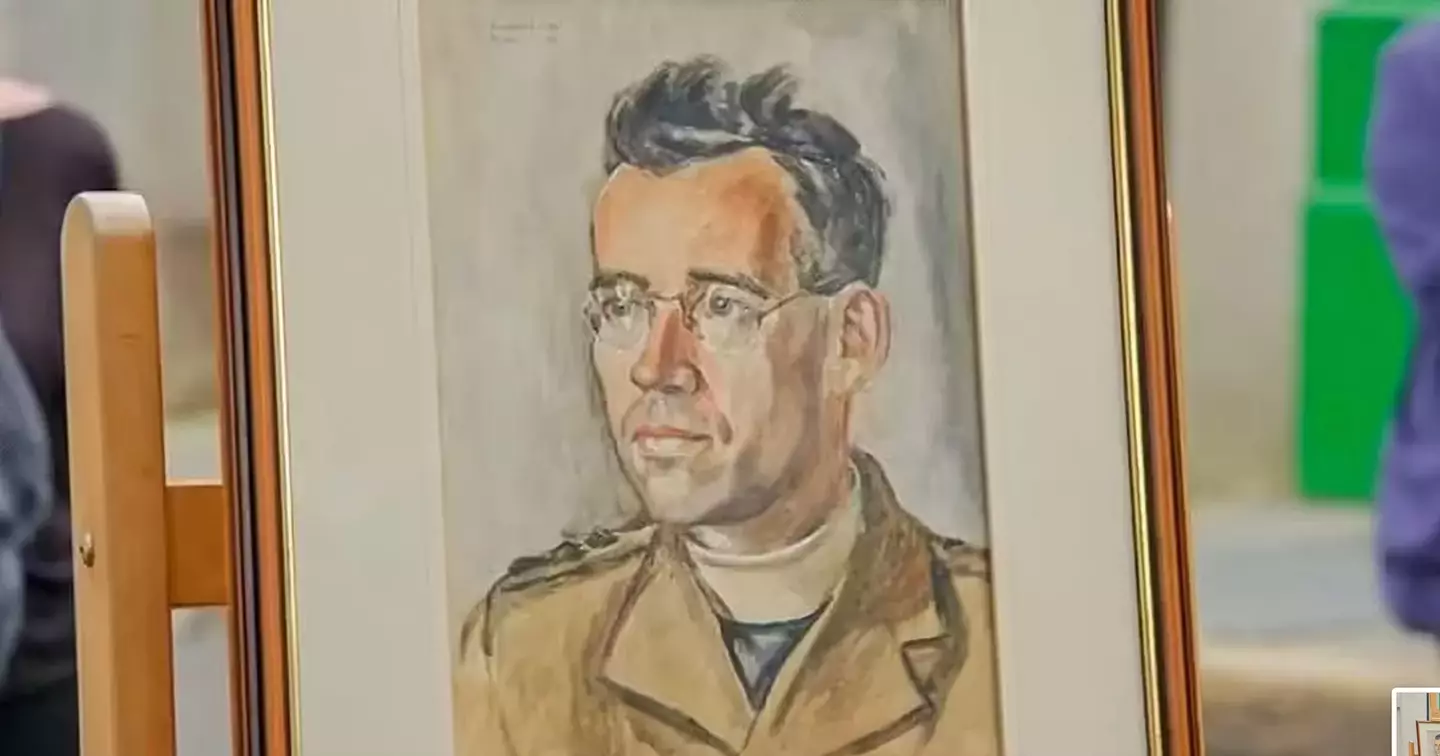
The post-WWII painting was too valuable to Frances Christie to give it a value. (BBC)
Describing the piece as ‘incredible’, the expert said: “What I think is incredible about this portrait though is that it brings alive – and you’re sharing with us – the experiences of clearly someone, from here who devoted his services and clearly made a real difference.”
After which the antiques expert refused to value the painting due to just how significant and important it was due to its links with World War II.
The expert explained: “In terms of value, I mean, this is the Antiques Roadshow, so we usually do put a value on things but I’m not going to put a monetary value on it today because it is so much more important than that.
“Because of its connection with Belsen, because of your uncle being someone from Belfast who was there at the moment of liberation… it has so much more of an important social (and) historical content,” Christie concluded.
A rare occurrence on the show that is known for valuing numerous classic items.
The strangest items that have appeared on Antiques Roadshow
Some items on the show have just been downright bizarre…
Human hair from famous poets
 Ever dreamed of owning the locks of William Wordsworth and Samuel Taylor Coleridge?
Ever dreamed of owning the locks of William Wordsworth and Samuel Taylor Coleridge?Well, it’ll cost you, as when this item was brought on Antiques Roadshow last year it was valued at upwards of £40,000.
The clippings were a family heirloom, and according to expert Justin Croft, one was taken on a person’s deathbed.
Yikes.
Nightmare fuel Teletubbies concept art
Turns out Tinky-Winky, Dipsy, Laa-Laa and Po originally looked pretty scary.
Jonathan Hills drew the concept art for the future children’s TV icons. He sadly died in 2020 and his wife brought some of his original sketches on the show in 2022.
Expert Mark Hill admitted some of the drawings were ‘creepy’, but went on to value the individual pieces between £500 and £2,000, and the entire collection of 80 drawings at up to £80,000.
A bottle of pee
Who could forget the time expert Andy McConnell inadvertently drank urine back in 2016?
A bloke called John found the bottle in his garden, and McConnell used the taste test to figure out what was inside, thinking it was port.
Fast forward to 2019, and Fiona Bruce revealed to McConnell: “Inside were these brass pins, all of these dating from the late 1840s, and the liquid – urine, a tiny bit of alcohol and one human hair.”
It turned out it was a ‘witches bottle’, buried on the threshold of a house as a protection against curses and bad luck.
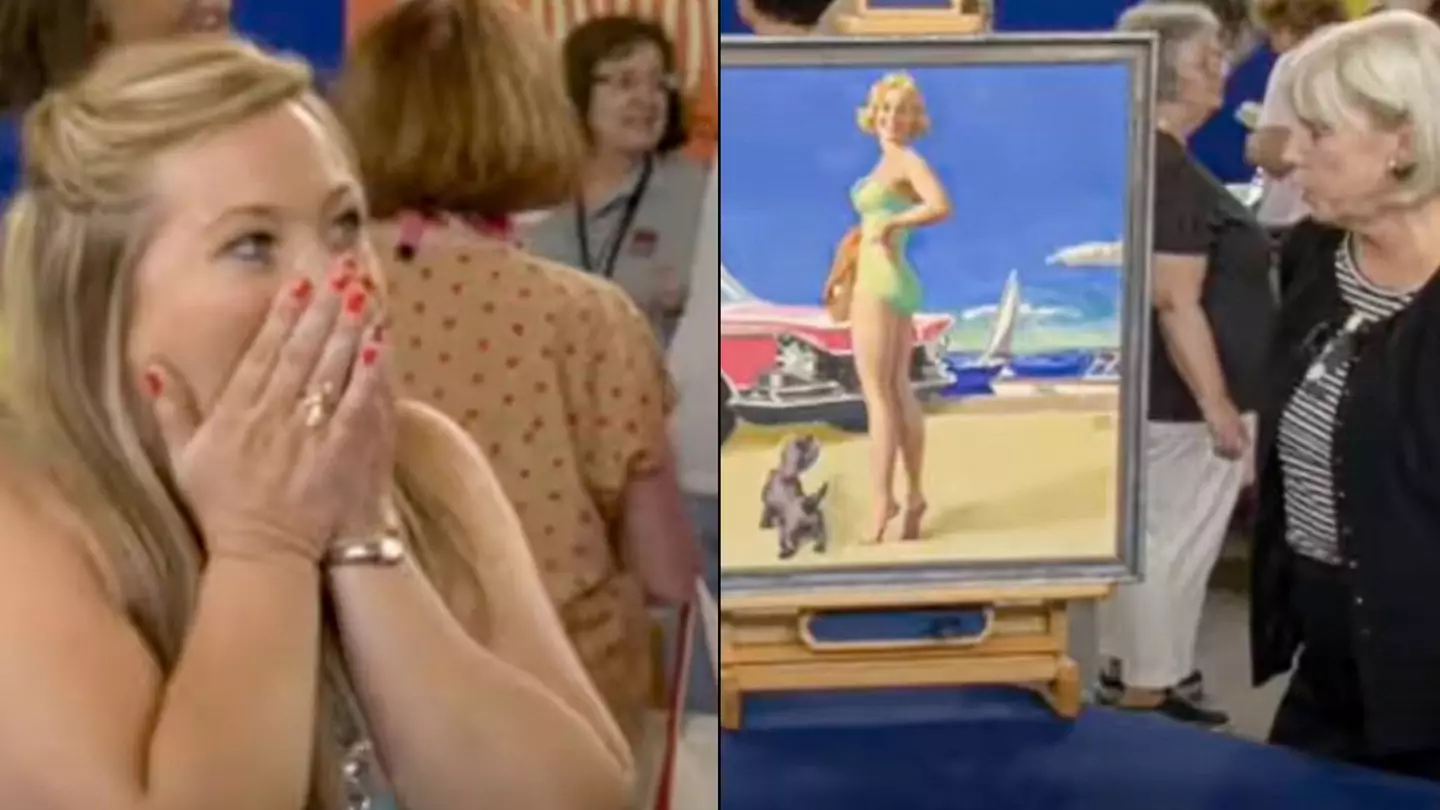
The woman appeared on the show with an Earl Moran painting, having no idea just how much the iconic piece was worth.
The show, which was filmed in Idaho, saw antiques expert Colleene Fesko examining the Earl Moran pin-up girl painting.
The owner explained that the piece of art had spent over a decade in her mother’s house, after she bought it for around $200 (£157).
The guest explained she had had her eye on the painting ever since it arrived at her mum’s and after recently remodelling her home, her mum ‘finally’ let her have it for her own house.
“As much as I can remember, it spent 10 to 15 years at my mum’s house,” she told Colleene.
“She bought it at an estate sale and she paid I think around $200 for it.
“I’ve just remodelled my house and I made it all 1950s. I kept telling my mum, ‘So can I have the picture now?’ So finally she gave it to me.”
Examining the painting, Colleene explained that it was during the mid 1950s that Moran found ‘fame and fortune’ with his artwork, specifically in Los Angeles where his work focussed on pin-ups.
 Colleene explained: “This was probably done as an advertisement for a car company or even a sporting company because you also have the sailboat and the motorboat but its real appeal is in being a pin-up.”
Colleene explained: “This was probably done as an advertisement for a car company or even a sporting company because you also have the sailboat and the motorboat but its real appeal is in being a pin-up.”The guest confessed she had never had the painting valued, adding: “I have no idea, honestly. I just painted a wall in my house the pink on the car so…
“And it looks really good in my house, so as to the value, no, I’ve never, never looked into it.”
When Colleene finally revealed the expected value of the painting, the guest was blown away.
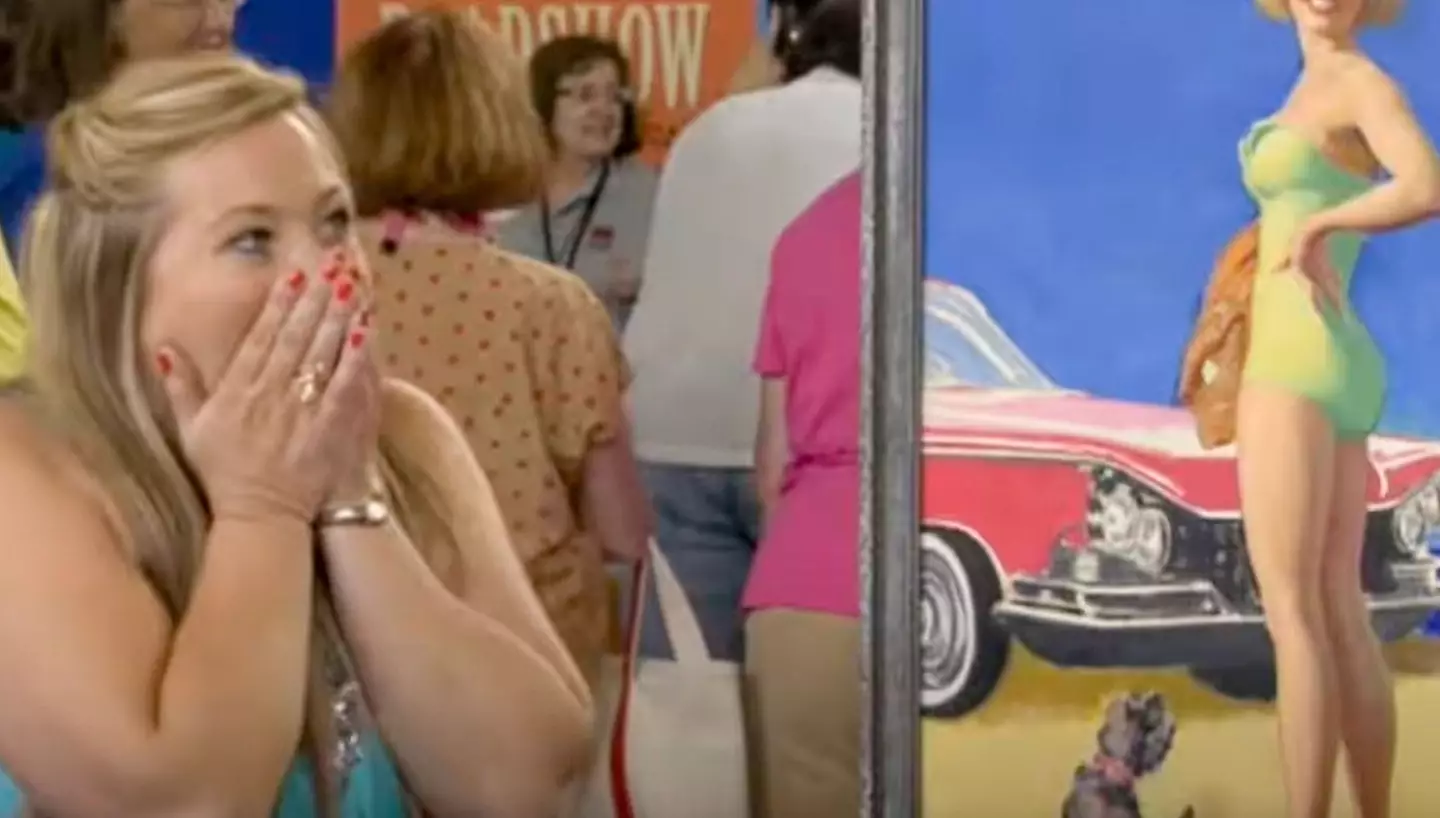 “Well, Moran’s paintings are valued on a sliding scale but not the usual sliding scale,” she said.
“Well, Moran’s paintings are valued on a sliding scale but not the usual sliding scale,” she said.“The more clothes that slide off the pin-up girl, the more valuable they tend to be. This is a very special one, she’s a lovely wholesome young girl, wearing the bright green bathing suit.
“The great period car, the period sailing vessels and motorboat, the cute dog, the nice signature – I would be estimating it between $20,000 (£15,797) and $30,000 (£23,696) at auction.”
The woman was in total shock and could be seen with her hands covering her face.
Laughing that she wasn’t going to give the painting back to her mother, she added: “Is my mum going to see this? Because I’m not giving it back!”
There could be a family row brewing here…
While it’s often funny to see someone go on Antiques Roadshow and get told their pristine family heirloom teapot is actually worth £1.50, the real attraction of the show is the people who bring on genuinely fascinating and valuable treasures.
There are some of us with weird and wonderful objects squirreled away that might be worth a lot of money, and it’s on such stuff that Antiques Roadshow is really made.
Think about the lady who was told her fancy brooch was actually worth over £25,000, or the man who was told his old watch could be worth more than £300,000.
It helps counterbalance moments such as a man who tore what he thought was a genuine Banksy off a wall being told that, without any way to prove the artwork’s authenticity, he’d be getting ‘nowhere’ and should have just left the art where it was for people to enjoy.
Meanwhile, on another episode we got to delve into the history of the English Civil War as someone had brought on relics from the final major battle of the conflict.

This portrait ended up being worth a lot of money. (BBC)
If you know your history then you’ll know that the Battle of Worcester in 1651 was the final major engagement of the ongoing clusterf**k that was Britain at the time, which includes the English Civil War, even though that was actually more like two civil wars but it’s already complicated enough as it is.
Anyhow, the battle ended up going the way of Oliver Cromwell and his Parliamentarians, who destroyed what remained of the Royalist army.
One of the folks who ended up on the losing side was James Stanley, the seventh Earl of Derby, who had his head hacked off a little over a month after being on the losing side in Worcester.
Back in those times people being executed could bring a friend along, so Stanley brought his buddy William Prescott onto the execution scaffold.
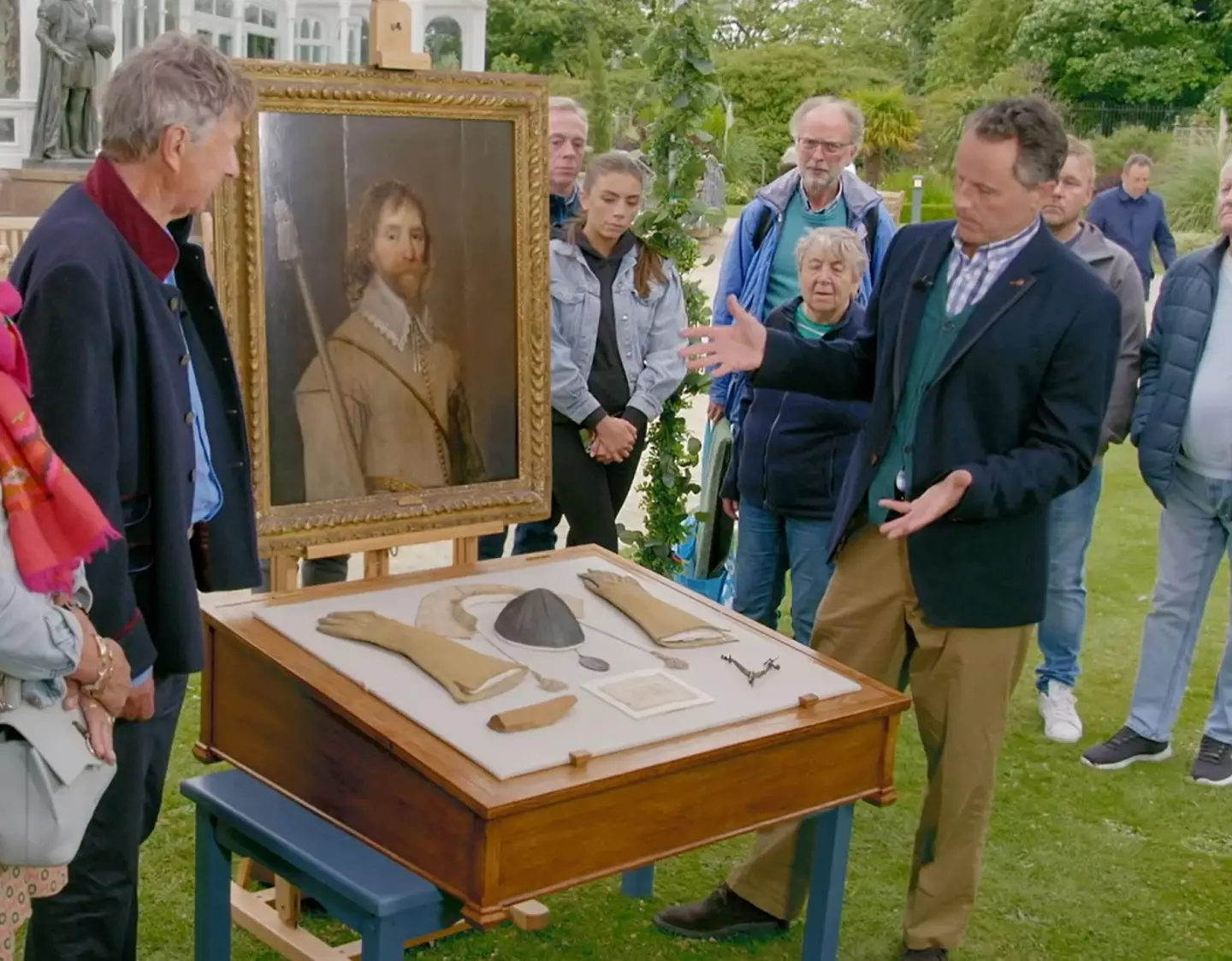
An impressive Antiques Roadshow haul, but ultimately not for sale. (BBC)
William wasn’t there to be killed himself, as he was instead there to put his foot on his friend during the execution to ‘make sure he didn’t wriggle’.
Centuries later, Prescott’s descendant showed up on Antiques Roadshow with a collection of Stanley’s belongings.
Brought on was a skullcap, a pair of gloves and a portrait of someone who Antiques Roadshow supposed was James Stanley, with all overseen by a big portrait of William, which was still in its original frame.
Antiques Roadshow expert Adam Schoon said it was an ‘amazing archive’, and started handing out valuations.
The large painting of William Prescott was valued at between £10,000 and £15,000, while the smaller one of James Stanley was ‘probably worth two to three thousand’, according to the expert.
Put all together, the expert reckoned that you’d get up to £22,000 if everything was auctioned off.
However, the guest decided it’d be ‘a travesty to sell them’, choosing to keep hold of his valuable historical haul.
